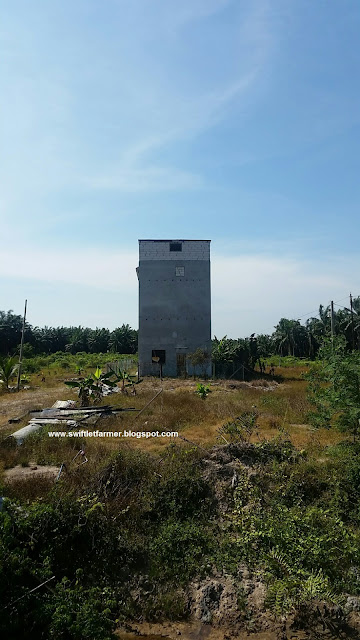After having visited various Swiftlet farms for many years, It is unsurprising to see Swiftlets farms that have been in operation for more than 3 years but have less than 30 nests. I have seen the best and the worst. Some located in the best locations yet failed miserably.
This Swiftlet farm started operation in 2013. It has less than 30 nests now. It is located in Sarawak. One of the best places to do Swiftlet farming. The geographical landscape is perfect for Swiftlet farming. Where did it go wrong? It is not the location, but the Swiftlet farm itself to be blamed. I have many students and clients from this area. They have followed my design and abide by the basic control of the internal environment standard. They are currently doing very well. Their Swiftlet farms have few hundred nests just within a few years of operation. What happened to this Swiftlet farm?
Last month I was asked to revamp this 20x 60 two storey Swiftlet farm located in a Prime Birds Area (PBA) in Sarawak. (I am unable to disclose the exact location as requested by the owner). There are many successful Swiftlet farms here. Some registered beyond 100 nests in the first year. Those that have good result are properly designed and built. Even simple built ones managed to attract Swiftlets to stay and build nests. So 30 nests for a period of more than 3 years is indeed a big problem.



I was surprised to see it adopted the Tunnel design. The Tunnel design was famous in Indonesia and there was quite a number of it in Northern Peninsular Malaysia. It is a complicated design. Modern Swiftlet farms do not adopt this type of design anymore. The Tunnel design pushes the birds to fly deep inside. In order to reach the nesting areas they have to fly through a tunnel (the staircase for the farm) before reaching the nesting areas. It takes a longer adaptation time for birds to fly into the nesting areas. If given a choice, I would never use a staircase as an Inter hole.
Many cited that this design helps to reduce light and prevents it from reaching the nesting areas. Don't they know that there are many ways to reduce light effect other than opting for Tunnel design.
As you could see from the above pictures, even with such design the size of second Entrance hole still has to be closed up by asbestos to reduce the glare. So you could see no significant effect of the Tunnel Design as claimed to reduce light.



In the nesting area, new partitions are erected to create cozy areas, thus helps young birds to stay. The owner has a tight budget, therefore, improvises were made, rather than hacking all walls to do a total revamp. The positions of tweeters were all wrong. Not all tweeters must face a single direction. It was misunderstood that all tweeters must face the Entrance hole. As it goes " not all birds fly in one
direction". If the owner understands this concept, then all these problems would not arise.
There are too few tweeters and they are not installed at strategic places. As we know young Swiftlets like to build nests on top of the Tweeters and around them. If every Tweeter could attract a pair of birds to build a nest, why not install more? Tweeters are not expensive. It is less than 1% of the building cost. Thus, I really don't understand. Why wouldn't the owner install more tweeters? It is a Mystery!
This Swiftlet farm is using the Louver type Vent-hole. There is one Vent hole every 4-feet. Imagine how many Vent-hole it has. The Louver type Vent-hole is many times more efficient in drawing inside/outside air into and out of the Swiftlet farm. I wouldn't be surprised that both internal and external temperature registered the same reading. With such environment who wants to stay and build nests in this Swiftlet farm?
As you could see in the pictures, all lover vent-holes are sealed except few just to create some circulation. It is much easier to build a new Swiftlet farm than to revamp a failed one. We can't simply knock down all beams or hack all walls as the owner has a tight budget. He has wasted so much money to build a failed farm. Having a failed Swiftlet farm is already stressful enough what more if he has to spend more to revamp it.
As usual, a sound system plan was given to the owner so that he knows where and how to install all tweeters from the Entrance hole to the roving areas. The diagram and guide on setting the amplifier volume and tune for every each floor of the farm were also provided.
I always believe in the principal of basic analogy when it comes to Swiftlet sounds. Stick to the basics. Through many years of involvement in this industry, I have seen all sorts of things. There are Swiftlet farms using more than 10 different sounds and changing them every hour. This is confusing and it defies the process of animal adaptation. Well, I will talk about this in my next article.
I am very sure that after the revamp, the number of nests will increase. Having a good location and now all it needs is a good Swiftlet farm to attract all the Swiftlets from the surrounding areas.
Good Swiftlet Farming All!
Questions and comments are welcome: swifjames@yahoo.com. Tel: 012-3173811
























